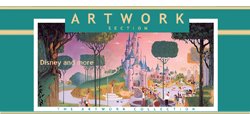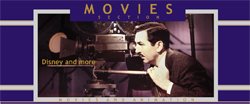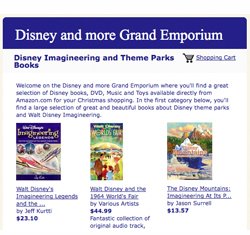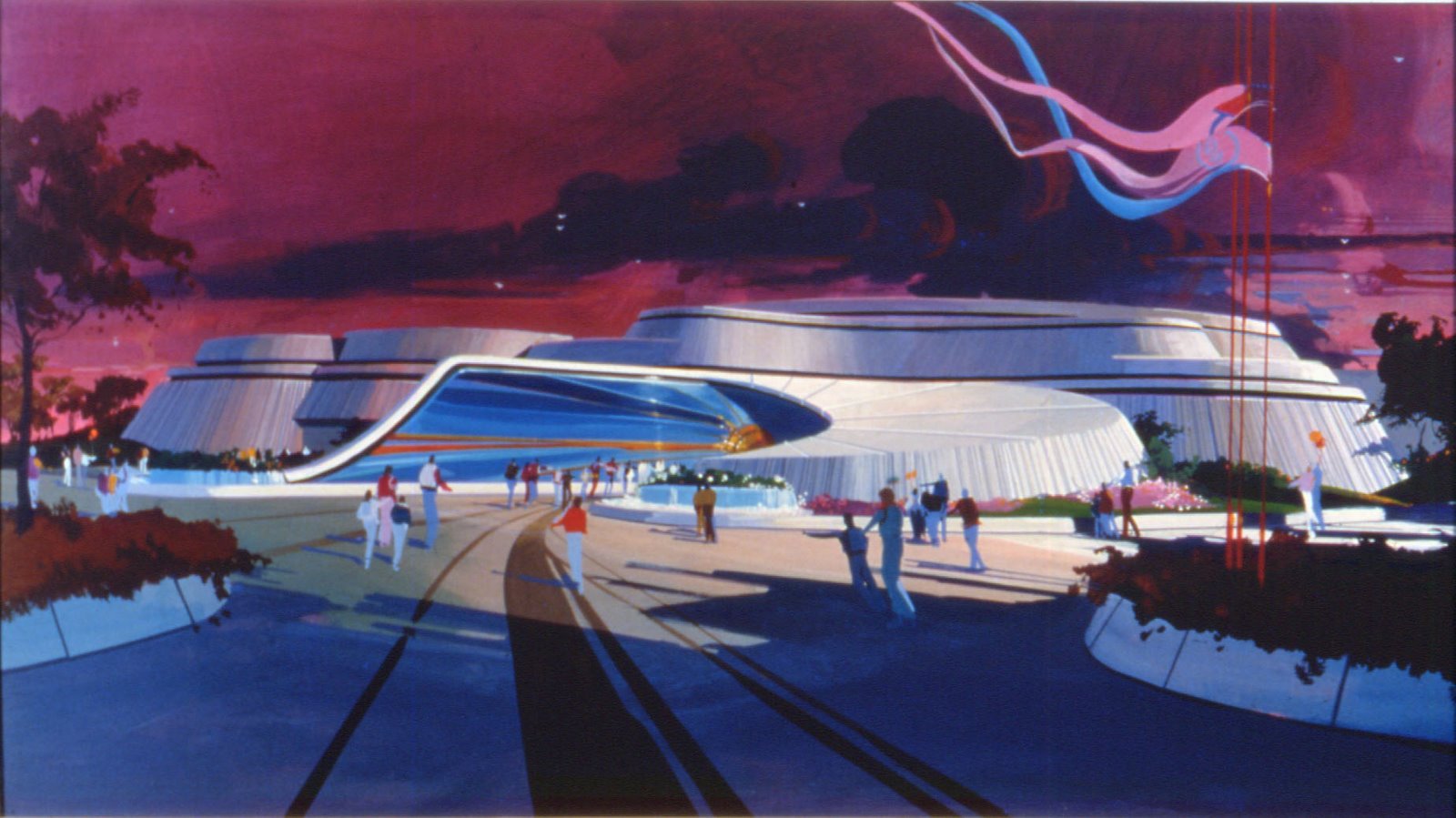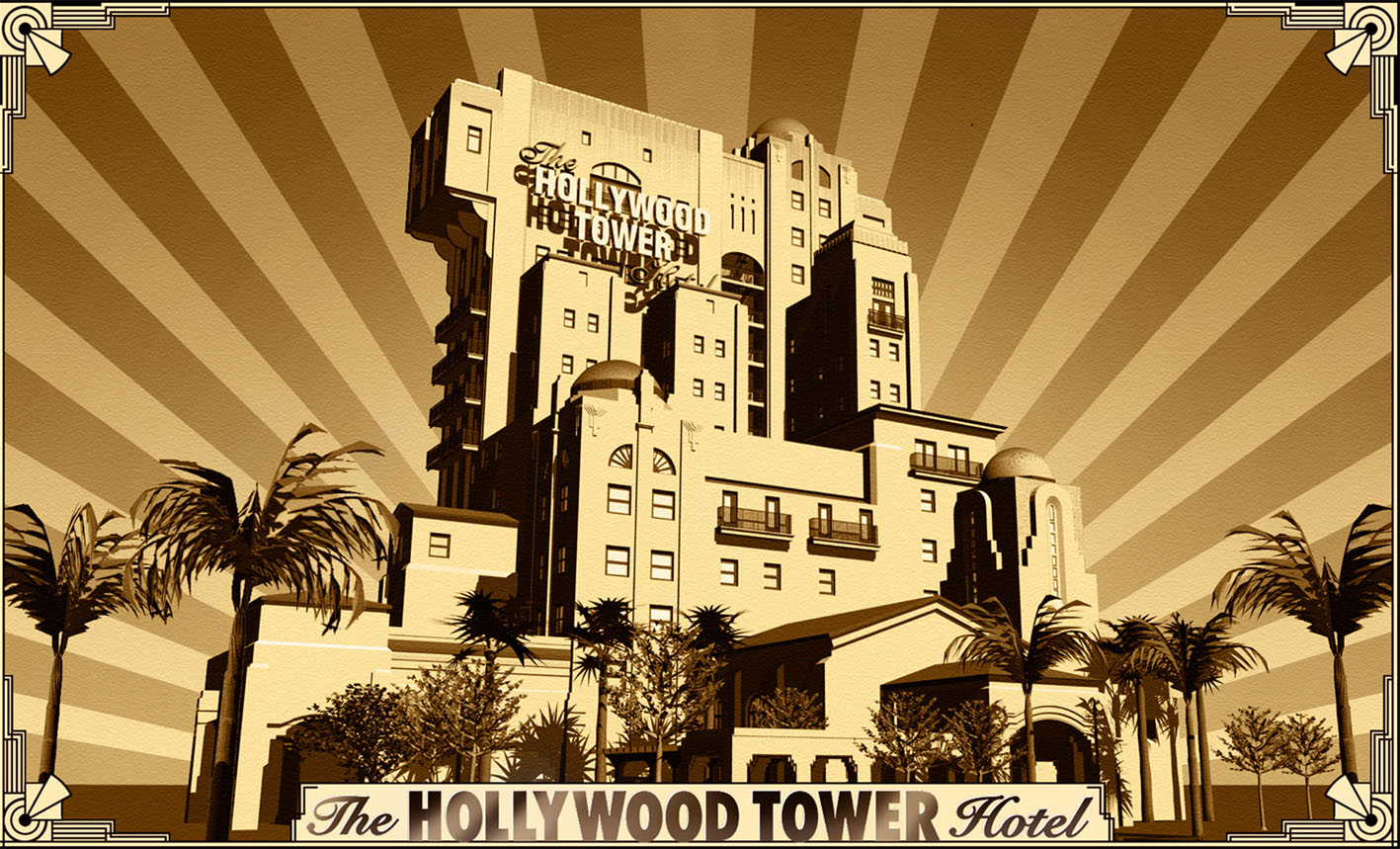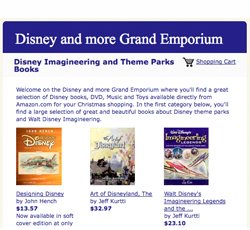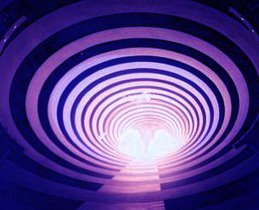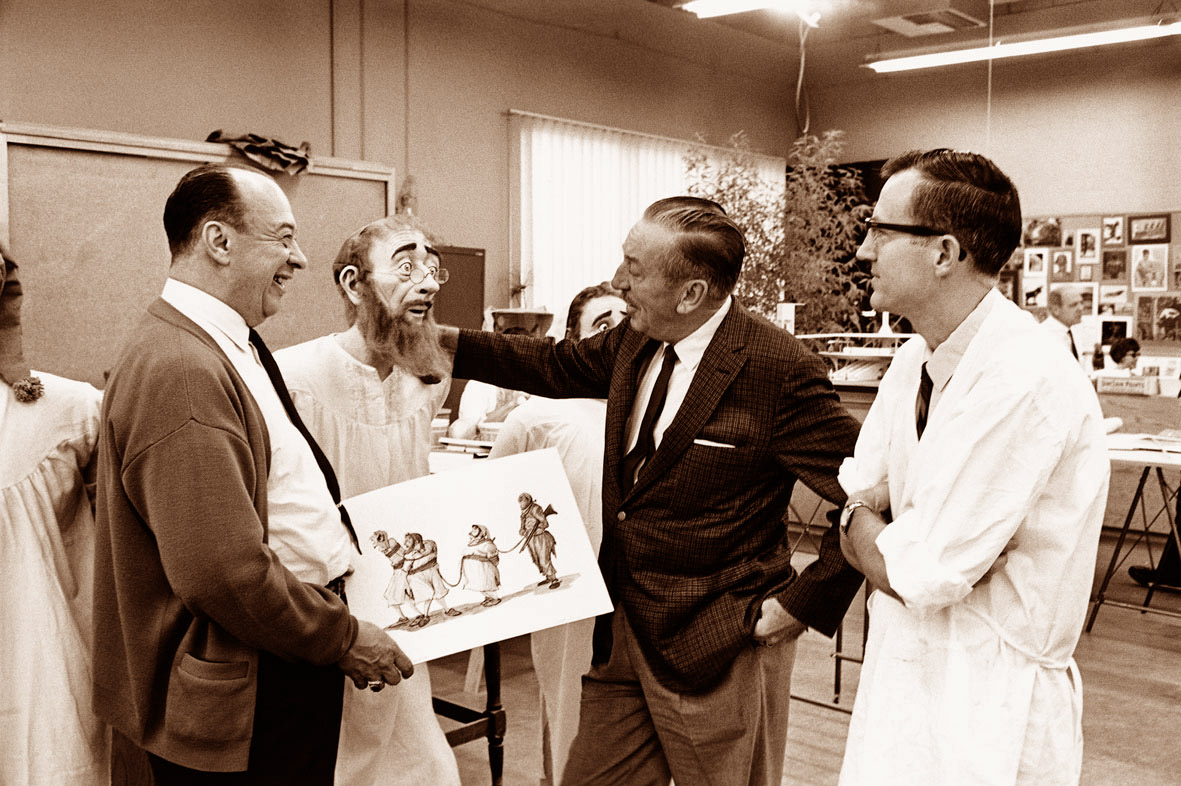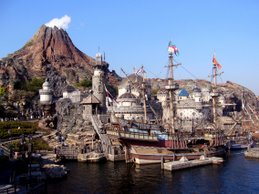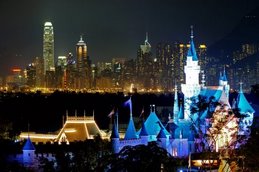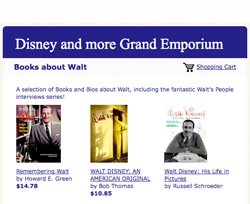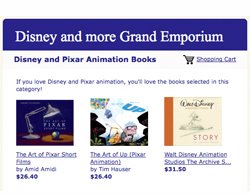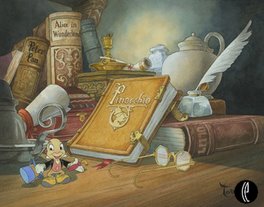
Not too long ago Mark Faft from the Insights and Sounds blog has posted the Tom Gilleon artwork below of Disney's California Adventure Grizzly Peak. It happens that the Imagineer who was show-producer for Grizzly Peak was WDI Imagineer Chris Tietz - who also was the show producer of Disneyland Paris beautiful Adventureland. So i had the idea to ask Chris if he had some inside story of the making and in this article Chris share his memories of the creation of Grizzly Peak and Grizzly River Run ride, Redwood Creek Challenge Trail, as well as answering questions that Disney fans often ask about why there is no Audio-Animatronics scenes during the raft ride.
In addition, and for the first time, you will also learn that Chris had envisioned for the land a train ride, which unfortunately never existed. The article also include never-seen-before pictures of the construction of the land shot by Chris Tietz!
Chris Tietz: Disney’s California Adventure was already in the starting stages of development when I became free and was looking for a new assignment at WDI around 1997. The Grizzly Peak area interested me the most so I inquired about it. They had already cast a Lead Designer, Chris Runco, and there was already a Show Producer in place.
I wanted to work on this state park-like area so I took the Production Designer position that was still open, as I had done on the first Star Tours a decade earlier where i had worked on the droid known as the "Goose Droid" that appears in the pre-show. Chris Runco did the head design of the Goose droid and we worked together on them - there were 2 "Goose Droids" in the pre-show of Star Tours and these two Goose figures were taken out of the now gone "America Sings" attraction in Tomorrowland, the rest of the Audio-Animatronics animal figures from that show went into the first "Splash Mountain" attraction. Chris Runco was also working on designing the REX droid while I made the hands, feet, tanks on the back of the “Goose droid", and the radar tail, plus the laser tool in his hand.
Runco was a good designer, but the Grizzly Peak project as a whole, was slow getting off the ground. There was a small 1/8th inch to the foot model that was rather simple. It had a generic bear on top and the raft ride track did a simple loop around it. I took this model back to my desk and redesigned much of it. I sent the raft ride track through the bear, and created the mine shaft scene under the bear among other things.
Teaming up with Runco we worked out the details and got the project moving along on track. Management was so pleased with the progress, they made me the Show Producer. I brought John Gizienski in to fill the Production Designer role ( John worked with me on Adventureland at Disneyland Paris as a Show Designer and Production Designer ).
I was amazed that there was no provision in the project for a large scale model. A project with so much rockwork design, and that interacts with a ride envelope, has to have a large model that can be scanned for accurate construction. It would be a disaster trying to build the real thing without it.
So I got a 1” inch to the foot model started that took us almost a year to design, build, and be ready for computer scanning. The ride engineers also used this model for their calculations, lighting and audio designers, landscape design, waterfall pump volumes, etc. From the model scans, this computer information went to the rebar fabricators to form the rockwork cage assemblies for the cement carvers in the field.

Above: Cut away of the Grizzly Bear model showing modular rockwork sections fitted around the steel structure.
Earlier Runco had proposed a “Nature Walk “ trail up and around the mountain. This concept was later dropped because of operations problems and safety concerns around the water flume. It was also around this time that I had proposed a train ride reminiscent of the old “Nature’s Wonderland Mine Train” that used to be in Frontierland. It would have gone over the geyser field into the mountain behind Condor Flats ( now Grizzly Air Field ) through a Rainbow Caverns - like scene and, coming outside, it would cross the large waterfall facing the Farm ( that later became Bugs Land and soon will be Marvel Land ) and continue behind the Winery viewing animated scenes before coming out over the main walkway, skirting The Redwood Creek Challenge Trail, and possibly along the edge of The Grand Californian hotel before returning to the station.
I didn’t get very far before I was told to cease because there was no budget for any of it. I tried to provide a “right away” path for the train to be added at some future date, but was again directed to stop because of cost. It would have been a nice attraction for the area.






It is often asked why we don’t have any animated scenes along the raft ride. The answer is we didn’t have any budget for it. Runco and I brainstormed some ideas and he did some fun sketches, but again we had no budget for any of it. The scenes we talked about would have been in areas like at the top of the lift, inside the Bear, just before the first drop, inside the Mine Shaft, before the second drop, and possibly in the Geyser Field. They were mostly about bears getting into mischief like getting into a camp site and going through the things they found. Funny scenes. That was going to be just before the first drop. Another bear in the Mine Shaft was a little bit scary in the dark. At the top of the lift there was going to be animated machinery huffing and puffing steam like it was going to blow up. More machinery, too, just before the second drop.
We also talked about having an old wooden shack sitting in the geyser field offering steam baths. The litttle shack scene would not have been accessible to guests, it was only to be a show scene to look at. The "steam baths" or "hot baths" was a gag because of the geysers all around it. It didn't get any further than a sketch idea. Unfortunately, there was no budget for any of these scenes, though. We only had a small budget for purchased props like old mine and lumber equipment we placed around the mountain.
Early in 1999 John and I relocated to the Anaheim construction site, while Runco stayed at WDI in Glendale, and for the next year and a half I field Art Directed Grizzly Peak, Redwood Creek Challenge Trail, and the merchandise shop from start to finish. It was a lot of work, but the results were very satisfying. A project I will always be proud of.






I want to thanks personally Chris Tietz for this great inside story and the construction pictures. Also, at a time Disneyland Resort is desperately trying to find ways to attract guests to others attractions to avoid crowds in the new Galaxy's Edge land, it could be a good idea to add the envisioned animated scenes which would cost much less than building a new attraction and will provide a new life to Grizzly River Run.
In the meantime, watch the videos below showing Grizzly River Run and Redwood Creek Challenge Trail filmed by Adventures in VR and SoCal Attractions 360! Note that the first video below is a 360° video and you can move the image with your mouse but you need to watch it either on Chrome or Firefox but not on Safari as it won't work.
Text and pictures: copyright Chris Tietz,
Artworks and others pictures: copyright Disney
I wanted to work on this state park-like area so I took the Production Designer position that was still open, as I had done on the first Star Tours a decade earlier where i had worked on the droid known as the "Goose Droid" that appears in the pre-show. Chris Runco did the head design of the Goose droid and we worked together on them - there were 2 "Goose Droids" in the pre-show of Star Tours and these two Goose figures were taken out of the now gone "America Sings" attraction in Tomorrowland, the rest of the Audio-Animatronics animal figures from that show went into the first "Splash Mountain" attraction. Chris Runco was also working on designing the REX droid while I made the hands, feet, tanks on the back of the “Goose droid", and the radar tail, plus the laser tool in his hand.
Runco was a good designer, but the Grizzly Peak project as a whole, was slow getting off the ground. There was a small 1/8th inch to the foot model that was rather simple. It had a generic bear on top and the raft ride track did a simple loop around it. I took this model back to my desk and redesigned much of it. I sent the raft ride track through the bear, and created the mine shaft scene under the bear among other things.
Teaming up with Runco we worked out the details and got the project moving along on track. Management was so pleased with the progress, they made me the Show Producer. I brought John Gizienski in to fill the Production Designer role ( John worked with me on Adventureland at Disneyland Paris as a Show Designer and Production Designer ).
I was amazed that there was no provision in the project for a large scale model. A project with so much rockwork design, and that interacts with a ride envelope, has to have a large model that can be scanned for accurate construction. It would be a disaster trying to build the real thing without it.
So I got a 1” inch to the foot model started that took us almost a year to design, build, and be ready for computer scanning. The ride engineers also used this model for their calculations, lighting and audio designers, landscape design, waterfall pump volumes, etc. From the model scans, this computer information went to the rebar fabricators to form the rockwork cage assemblies for the cement carvers in the field.
Above and below, pictures of the 1" to the foot rockwork model.
Picture above: Left side of Grizzly River Run.

Above: Right side of Grizzly River Run.
Above: Top of Grizzly River Run lift.
Above: Cut away of the Grizzly Bear model showing modular rockwork sections fitted around the steel structure.
Earlier Runco had proposed a “Nature Walk “ trail up and around the mountain. This concept was later dropped because of operations problems and safety concerns around the water flume. It was also around this time that I had proposed a train ride reminiscent of the old “Nature’s Wonderland Mine Train” that used to be in Frontierland. It would have gone over the geyser field into the mountain behind Condor Flats ( now Grizzly Air Field ) through a Rainbow Caverns - like scene and, coming outside, it would cross the large waterfall facing the Farm ( that later became Bugs Land and soon will be Marvel Land ) and continue behind the Winery viewing animated scenes before coming out over the main walkway, skirting The Redwood Creek Challenge Trail, and possibly along the edge of The Grand Californian hotel before returning to the station.
I didn’t get very far before I was told to cease because there was no budget for any of it. I tried to provide a “right away” path for the train to be added at some future date, but was again directed to stop because of cost. It would have been a nice attraction for the area.

Above and below: Rare pictures of the construction of Grizzly Peak.
Chris Tietz is in the foreground, bottom left.
Picture above: Crane putting the top of the Grizzly head on.

Picture above: Grizzly River Run lift with Grizzly Peak.

Picture above: Also the ride lift, with Paradise Pier in construction in the background.

Picture above: the mine shaft of Grizzly River Run during construction.

Picture above: Grizzly River Run second drop, in the foreground.

Picture above: WDI Imagineers testing the Grizzly River Run raft ride, with the Grand Californian Hotel in the background.
It is often asked why we don’t have any animated scenes along the raft ride. The answer is we didn’t have any budget for it. Runco and I brainstormed some ideas and he did some fun sketches, but again we had no budget for any of it. The scenes we talked about would have been in areas like at the top of the lift, inside the Bear, just before the first drop, inside the Mine Shaft, before the second drop, and possibly in the Geyser Field. They were mostly about bears getting into mischief like getting into a camp site and going through the things they found. Funny scenes. That was going to be just before the first drop. Another bear in the Mine Shaft was a little bit scary in the dark. At the top of the lift there was going to be animated machinery huffing and puffing steam like it was going to blow up. More machinery, too, just before the second drop.
We also talked about having an old wooden shack sitting in the geyser field offering steam baths. The litttle shack scene would not have been accessible to guests, it was only to be a show scene to look at. The "steam baths" or "hot baths" was a gag because of the geysers all around it. It didn't get any further than a sketch idea. Unfortunately, there was no budget for any of these scenes, though. We only had a small budget for purchased props like old mine and lumber equipment we placed around the mountain.
Early in 1999 John and I relocated to the Anaheim construction site, while Runco stayed at WDI in Glendale, and for the next year and a half I field Art Directed Grizzly Peak, Redwood Creek Challenge Trail, and the merchandise shop from start to finish. It was a lot of work, but the results were very satisfying. A project I will always be proud of.

Above and below, a series of different WDI artworks for Grizzly River Run.



Below, artwork and map for Redwood Creek Challenge Trail.


I want to thanks personally Chris Tietz for this great inside story and the construction pictures. Also, at a time Disneyland Resort is desperately trying to find ways to attract guests to others attractions to avoid crowds in the new Galaxy's Edge land, it could be a good idea to add the envisioned animated scenes which would cost much less than building a new attraction and will provide a new life to Grizzly River Run.
In the meantime, watch the videos below showing Grizzly River Run and Redwood Creek Challenge Trail filmed by Adventures in VR and SoCal Attractions 360! Note that the first video below is a 360° video and you can move the image with your mouse but you need to watch it either on Chrome or Firefox but not on Safari as it won't work.
Text and pictures: copyright Chris Tietz,
Artworks and others pictures: copyright Disney






































































































